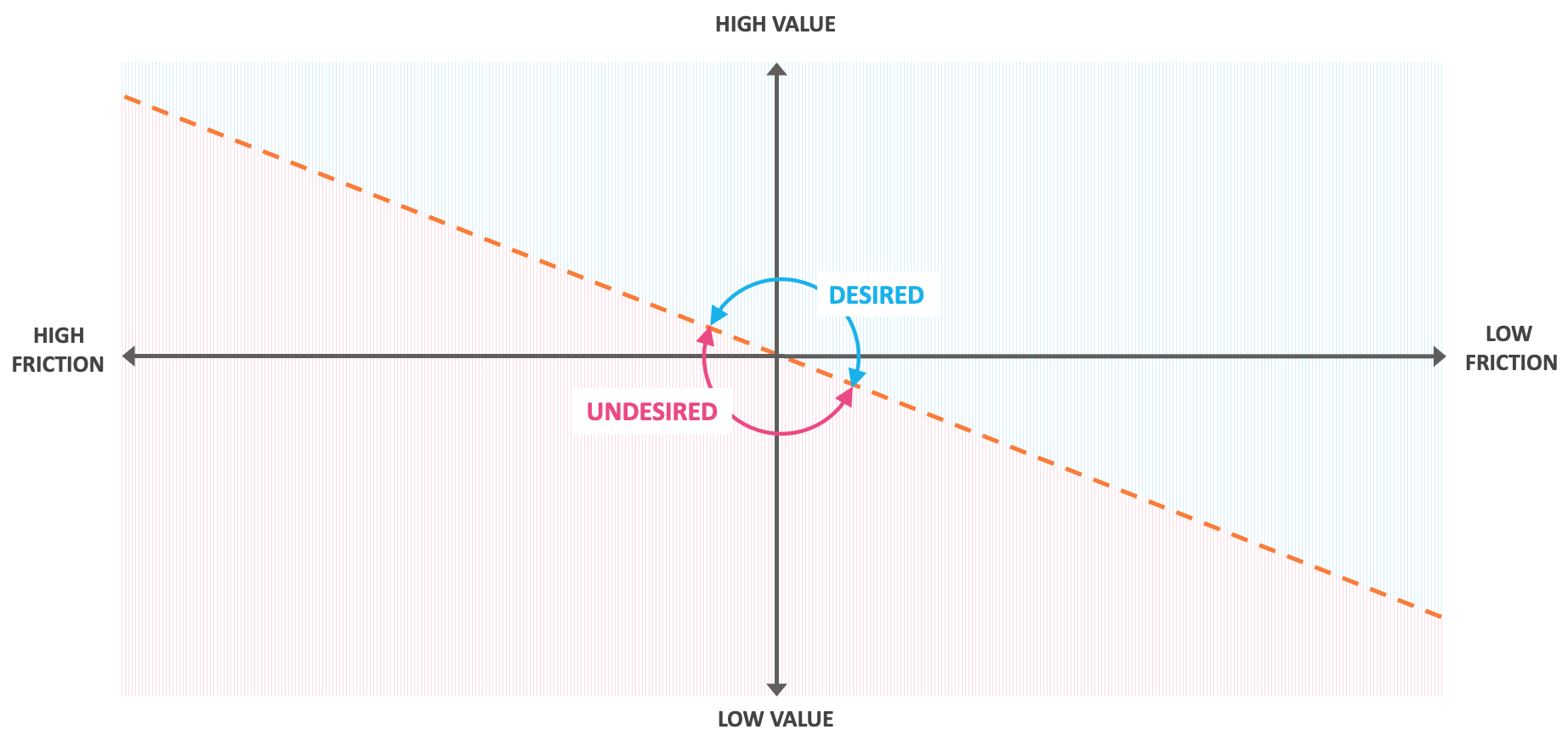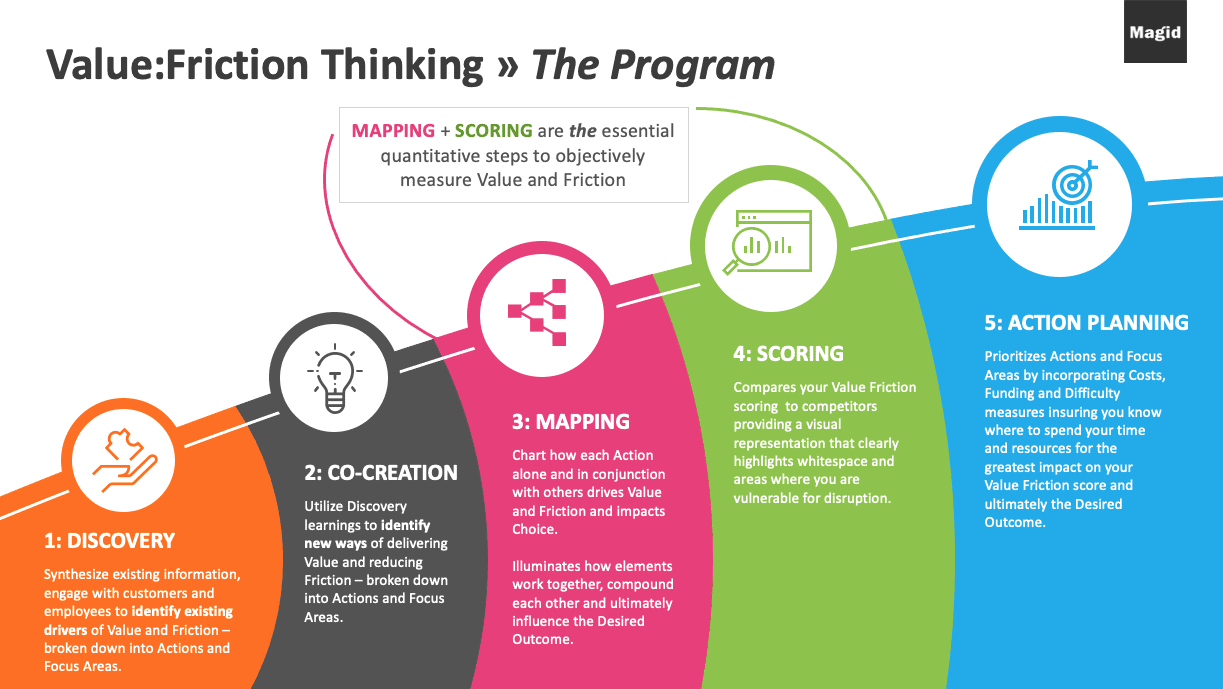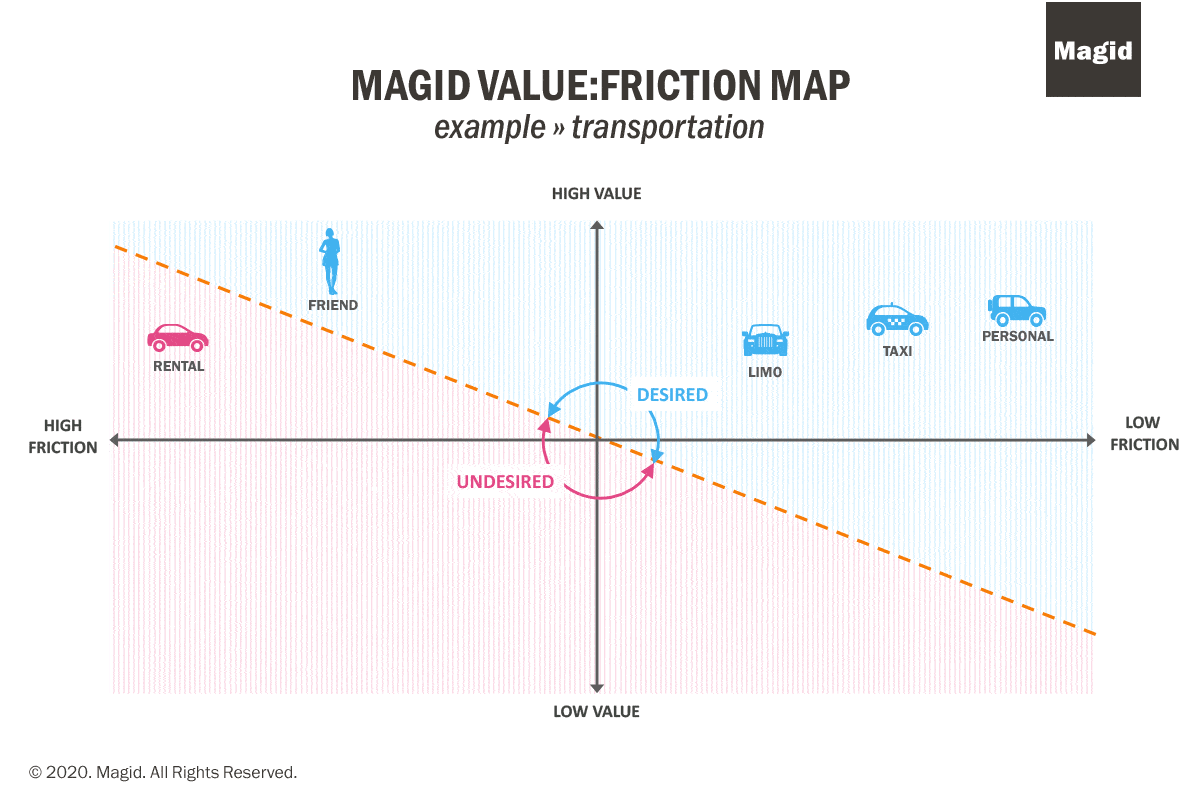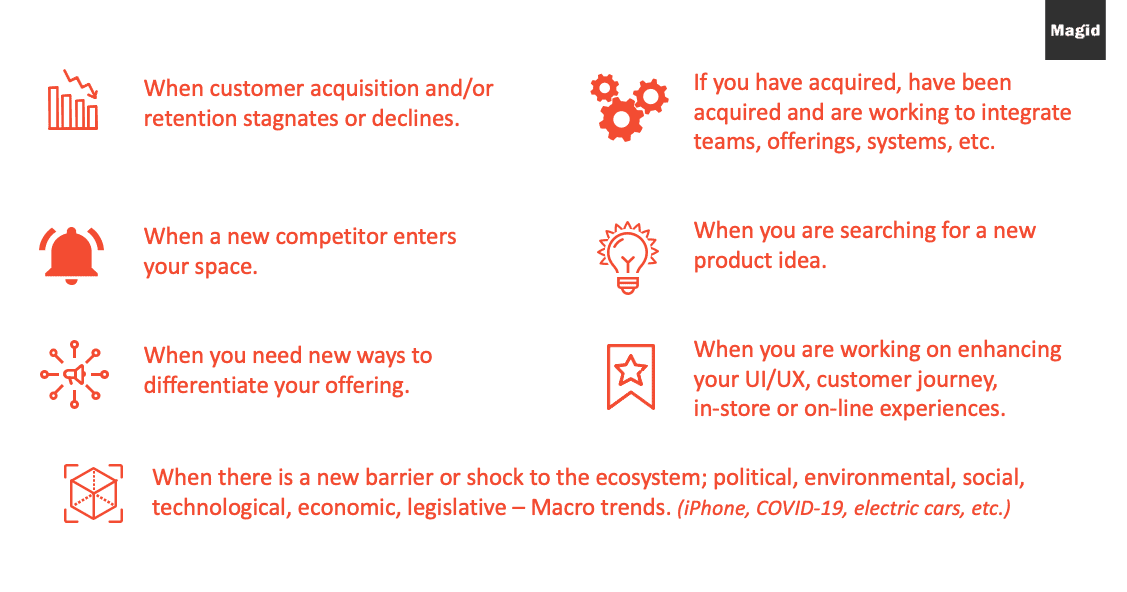Improve the customer experience by measuring what matters
Businesses have become obsessed with measuring customer satisfaction and aspects of customer experience using metrics such as the Net Promoter Score (NPS). The obsession is fueled by the fact that many employee and executive bonuses are determined, in part, by satisfaction metrics.
Yes, these metrics can be an effective way to gauge how your customers are feeling at a moment in time. However, while these metrics provide a point in time measurement, they do not indicate why the score is what it is and, most importantly, what needs to be done to improve it.
To solve this problem, we began evaluating businesses using the concept of a Value:Friction Map (illustrated below). Our belief is that customers will select your offering or a competitor’s based on how much Value is provided and how much Friction may be involved in receiving this Value.

Over time, we expanded the Value:Friction Map into the Value:Friction Thinking Framework. The framework identifies current and potential actions that either deliver value and/or remove friction – and quantitatively measures them to determine which actions will have the greatest impact on growing your business and increasing customer satisfaction.
The Value:Friction Thinking Framework consists of these 5 steps:
- Discovery
Synthesize existing information, engage with customers and employees to identify existing drivers of Value and Friction – broken down into Actions and Focus Areas.
- Co-creation
Utilize Discovery learnings to identify new ways of delivering Value and reducing Friction – broken down into Actions and Focus Areas.
- Mapping
Chart how each Action alone and in conjunction with others drives Value and Friction and impacts Choice. Illuminates how elements work together, compound each other and ultimately influence the Desired Outcome.
- Scoring
Compares your Value Friction scoring to competitors providing a visual representation that clearly highlights whitespace and areas where you are vulnerable for disruption.
- Action Planning
Prioritizes Actions and Focus Areas by incorporating Costs, Funding and Difficulty measures insuring you know where to spend your time and resources for the greatest impact on your Value Friction score and ultimately the Desired Outcome.

We’ve found that identifying all the possible actions that deliver value and/or remove friction enables us to see the business in a truly new light. This light shines on opportunities to innovate and opportunities to disrupt.
To bring this concept to life, think about the transportation industry as an example. Imagine if you applied Value:Friction Thinking to the taxicab experience in 2008. Very quickly, you’d identify several points of friction associated with the experience such as: wondering if or when a cab will show up as you wait in the rain, worrying about how much the fare will be and if the driver will take the most efficient route, fumbling with your wallet as you hurry to get out of the cab in traffic, and so on.
All of these friction points signaled that the taxicab business was ripe for disruption, and Uber proved that it was.

Identifying actions to add value and remove friction from your offering utilizing the Value:Friction Thinking Framework is a sure-fire way to improve your customers’ experience and increase satisfaction metrics like NPS. The framework is particularly effective in the following situations:

Having an overall customer satisfaction score like NPS is comforting but is it enough?
Do you know what actions to take next to improve the customer experience and satisfaction – and which actions to avoid? Try thinking about your business from the perspective of Value:Friction and you’ll likely uncover new ideas and a new approach for prioritizing your investments.

